Your personal music search space.
Augment your understanding of music.

YMUSIC SEARCH ENGINE
______________________________________________________________________________

Musical analysis is a complex academic discipline which, today, is inherently related to the fields of music technology and music economics. Why does musical analysis stay important in the music technology era? How does music meet branding in advertising? Which value does the study of embodied music bring to value creation? You may read more below.
WHAT IS MUSICAL ANALYSIS?
WHY MUSIC? QUALITY ESSAYS ON MUSIC LISTENING FOR AVID READERS
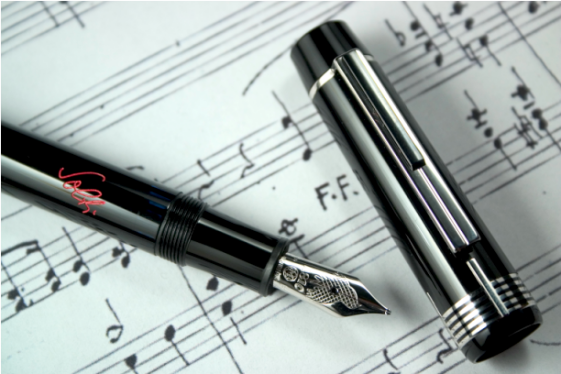
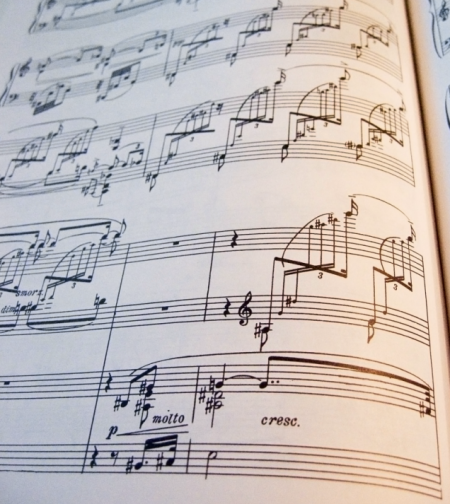
Listen to ‘Under Pressure’ to compare it with ‘Ice Ice Baby’! Try YMusic, your free personal assistant (it includes musical criteria to select music) and put together other pieces of music to discern which are the musical characteristics they share!
VALUE CREATION AND MUSICAL IMITATION: WHEN CAN THEY GO TOGETHER?
Musical expansion and knowledge sharing
Independently of any consideration related to law and copyright, it is easy to understand that appropriation of artistic materials can be intentional or unintentional. In the case where musicians want to create an end for unfinished works, it is clearly intentional. And when these works are in the public domain, it does not raise any question. When musicians appropriate musical creations that are not in the public domain, whoever they are, it raises problems. Such phenomena may happen between individuals, but also between two cultures of which one is economically and socially strong, while the other is not.
For instance, everyone involved in the music industry knows how, during the 20th century, some musicians published by corporations took advantage of unknown musicians’ work, notably in blues music. Yet some appropriations may open up new possibilities for artistic outreach. When? When they are part of the public domain. In that case, borrowed ideas are taken as a departure point and may be extended in order to achieve a new original musical idea. And then musicians share knowledge that has been acquired.
Interpolation, between personal muse and plagiarism
The way composers borrow elements from other works and merge them is also important. When it is really subtle, a new musical object is really created. And the target is not to take the work of other composers without crediting them, rather it is about following a personal muse. It may also happen that a composer copies his own previous compositions so that he can reshape them. In that case, they are simply doing a creative work. In other cases, plagiarism is obvious. And curiously, it is not always pursued. For instance, rapper Vanilla Ice borrowed a complete melody to a song written by David Bowie and Queen: ‘Under Pressure’. Neither Queen, nor David Bowie, were credited for their work, they did not attempt to go to court; yet sources say they were compensated for the infringement. In an industry that is currently said to be unforgiving, that situation looks somewhat unusual.
Other artists, like Michael Bolton and even Johnny Cash or George Harrison, have been pursued by courts for infringement and had to pay large sums for plagiarism. These cases show that even well-known artists do not escape their duties. Yet there is an exception to the intellectual property laws that is linked to the concept of copyright: it is when a musician makes an interpolation. Interpolation is not sampling, it is the use of a melody coming from an existing song in the framework of a re-recording. Interpolations are subject to compulsory license, a type of license that authorizes an individual or a company to use the intellectual property of someone else without asking for the owner’s consent. In that case, the owner is paid a set fee.
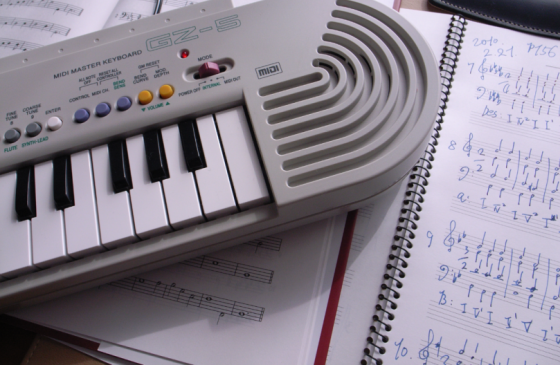
Try YMusic, your free personal assistant (it includes musical criteria to select music) and discover how great composers as well as commercial music writers can showcase their personal talent when they write circumstance music!
WHAT DOES CLASSICAL MUSIC BRING TO ADVERTISING?
Is there a dichotomy between circumstance music and other music regarding inspiration and creativity?
In academic circles, music researchers can have a very simplified view of music genres. For them, the classical music composer is an inspired poet at the service of the musical art, while the musician who writes music for commercials is a laborer attracted by a commission. Does such a simplistic and fatalistic vision have a basis or not? Perhaps in some cases, however, the history of music is full of pomp and circumstance music, written for special occasions such as graduations, coronations, funerals, weddings and all kinds of events and these can be an important source of income for composers. Also, no composer can decide in advance to write unique and notably inspired circumstance music.
Thus it seems that the will to increase outcomes coming from music composition is not directly linked to the presence of inspiration in a negative way. Moreover, in certain instances, music composers can find additional motivation in time constraints. It gives them a source of creative stimulus. Numerous great classical music composers wrote circumstance pieces. For instance, Ravel, in 1905, wrote an ‘Introduction and Allegro’ for harp, clarinet, flute and string quartet.
Music written for the screen and for advertising and compositional constraints
Are occasional music composers free or do they execute all that their customers want thoughtlessly? Monteverdi, who worked at the court of Mantua, sometimes refused to execute the orders of his patron. Beethoven had numerous patrons. Many pieces he wrote were commissioned by princes. However he retained his independent spirit, following his inspiration. Such composers assign a framework to themselves. However, for the 20th century, music composers must face increasing constraints, especially when they write music for film, television or media. Music can impose order or create harmony, and even a religious founder like Martin Luther used it to convey the main elements of the Protestant doctrine. Music can also create specific moods in order to increase economic consumption. In advertising, the recognized role of music does not prevent that it is first used to sell products. Music being a powerful emotional force, it was already known in Ancient Greece: it is a strategic complement to the speech contained in an audio advertisement. From the 1920s, in the United States, mass advertising has uused soundtracks to engage its audiences via the radio. At that time, sponsors and advertisers produced entire radio programs, contributing to create musical capitalism, besides records labels. In those days, they had very little information related to their audiences, yet music was a quite inexpensive commodity to fill broadcast time. To know more about their tastes, they offered free photographs of stars in return for completed questionnaires! Two decades later, they began to use music to set emotional tones in listeners’ minds and all advertisements included a jingle, some little catchy song easy to remember and to share. Many of them are today part of popular culture.
Listen to new music introductions! Try YMusic, your free personal assistant (it includes musical criteria to select music) and browse popular music genres to find new songs according to your tastes!
WHAT ELEMENTS DO MUSIC COMPOSERS USE TO SUCCESSFULLY WRITE POPULAR PIECES OF MUSIC?
Introductions
When are listeners attentive to a song? If they like it, they will not miss any part of it. Yet there are moments which are more important during which a music composer can get their attention. These moments are generally the introduction, the appearance of the verse and the emergence of a chorus. Statistics produced by records labels and other music industry agents show that the importance of each of these elements varies through time, sometimes in the same year.
Yet the importance of the intro is always much greater than that of the verse or a chorus. Most introductions are short: 54% of them have a duration of less than 10 seconds and 38% are less than 20 seconds, a professional music industry report said. There are different types of introductions: introductions can establish an atmosphere, set a scene, be used in the framework of a narrative, etc. Introductions are generally establishing a primary hook, engaging the listener, sometimes on a deep level. That hook can be instrumental, vocal or both.
How is an introduction distinct from the rest of a song? It depends on the title. Generally, music composers try to find a balance between contrast and repetition. An introduction leading to a music that is totally different is more likely to disappoint the listener than one which leads to music that is slightly different. Introductions which are too similar to the rest of the piece they lead into can be deceiving too. Actually the level of similarity must be balanced between these two extremes.
Verses and chorus
Verses and chorus are two elements that can foster the memorization of a song, at the musical or at the vocal level. By doing so, they make the song more engaging. To maximize the impact of a chorus, there are various techniques, like the introduction of a high pitch or a transition in the rhythm. These techniques depend upon the element of surprise: the less predictable the change is, the more the listener will be surprised and if the change is also significant, musically speaking, then the listener will really appreciate it.
In one word, when composers take calculated risks, they have a reasonable chance of drawing in the listener. And the use of various smart choruses in the same song can produce results too, professional composers say. Let us notice that a chorus can act as a transitional bridge between two parts of a song. And also that the great flexibility of popular music genres, when it comes to details, gives them freedom of movement to move from verses to chorus. Finally, the progress of music technology unceasingly enables changes in the way composers may harmonize melodies with chords and maximize the scope of each element of a song.
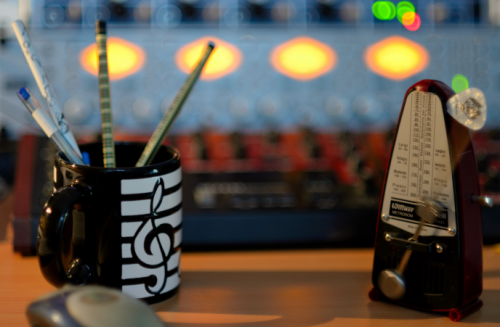
Discover well-known sonic signatures made for commercial music! Try YMusic, your free personal assistant (it includes musical criteria to select music) and discern which one you prefer!
WHAT DO NEUROMARKETEERS DO TO HELP ADVERTISERS TO SEARCH FOR MUSIC TO SUPORT THEIR CAMPAIGNS IN EFFICIENT WAYS?
Advertising to fulfill prospects’ needs by conveying a straightforward message
Whether they are involved in the field of traditional radio and television or in the framework of online services, advertisers know that advertisements which work are not always those which sell. In other words, good advertisements do not always present the products listeners really want to buy. How do these listeners themselves perceive advertising? What do they find attractive or not? Actually it is simple. People are attentive to advertisements when they are relevant to their needs or interest them in a clever way and convey a clear message.
That situation is reinforced when advertisements present products they already know. Sounds are also considered as useful because they help listeners to create pictures in their mind. It is demonstrated that music increases the effectiveness of an advertisement created for television by growing its success by 20 or 30%. Why? Because music is a medium that talks to listeners’ emotions.
Music can touch prospects without having to express any rational message. How do people react to advertising at the emotional level? Listeners answer surveys, however they do not always say what they think and most of the time it is because they are not always conscious of their own feelings. On the other hand, they do not always analyze what they feel. When they do, in the field of purchasing as in others, both their emotions and thoughts have an influence on their purchasing behavior.
Music advertising listeners and their emotions
Knowing that, neuromarketeers literally want to go under their skin to know what they feel and to assess the emotions they might not be conscious of themselves. Instead of using surveys during which people must think and write, they show various versions of the same advertisements to people, a silent version and different versions containing distinct music. Then these researchers try to discern the reason why one piece of music triggers more emotions than others do so that advertisers may create relevant sonic signatures for adverts that will be disseminated on a large scale.
Let us notice that music, in advertising, is a creation, yet it is also a reflection of what kind of music is popular when the product that it accompanies is created. It is very evident that ‘Like Ice in the Sunshine’, written for Langnese, which is a company that sells ice and honey, is conveying the spirit of the 1980s: a high energy sound, carefree lyrics and a video that pretends to be a mini movie. Listening to more recent music created for Langnese, it appears that the sonic signature is more downtempo, behavioural and based on storytelling. Whatever the brand is, music can claim a leading position in the framework of an advertising campaign and various musicians who wrote for advertisers receive prestigious awards like Grammys or Emmys.
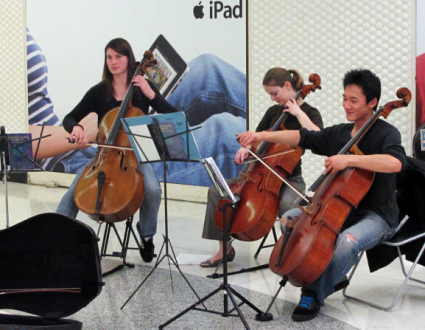
Listen to commercial music created for corporations! Try YMusic, your free personal assistant (it includes musical criteria to select music) and discern how their sonic signature conveys the values of great brands!
HOW DOES MUSIC MEET BRANDING IN ADVERTISING?
Branding and advertising at the crossroads of psychology and art
Branding and advertising are not part of the scientific area(arena), yet they are an ensemble of techniques and skills that indicate a good knowledge of human psychology in the field of consumption. Advertisers know for instance that the human mind is not totally rational and that reason is not always what the human mind is favoring(mind favors), in a purchasing process. Actually, emotion plays a great role in any buying process.
Students in marketing, generally raised, like everyone, with a traditional view of the mind coming from Plato, are not always conscious of the mechanisms that are really in action, in such situations. Researchers in neuroscience found that people can feel emotions a certain time before deciding on and taking an action. And it is only well after they took the action that they can explain why they acted like they did. What does it mean? Just that humans do not really like to think in a rational and independent way. Most of the time, they take emotional, unconscious and automatic decisions.
Musical cues to reinforce the advertising
Besides these generalities, psychological theories of advertising are various. They include systems like the information processing model, the Yale reinforcement approach or the dual process model. The last system put the information given in advertising in two categories: on one hand, messages and arguments; on the other hand, heuristic cues. The potential customer is evaluating the line of argument. Cues, that can be anything from colors to music and sound and are not integral parts of the message, are also evaluated. When the elements of the two categories are evaluated in a positive way, the prospect will be inclined to give a chance to a product.
In advertising, the choice of a specific piece of music is not made to create the message. It is an element that intends to influence feelings, to create associations and to evoke emotions. It is said to be part of the priming paradigm, a psychological concept explaining that implicit associations made by the human memory between different stimuli can lead to quicker identification. What does it mean, musically speaking? That a piece of music bearing the emotional core values of a brand will invite listeners that are part of the target audience to feel what the advertisers want them to feel when in contact with the message explaining what a product can do for them.
Marketeers talk about a sonic signature, that takes into account the properties of a piece of music, the positive values of the brand and the target audience. That is why a high number of brands want to align the music they select with the culture of their company. Is the product family oriented, mainstream, serious, niche, sophisticated? According to the answer, the choice of the music will be different.

Meanwhile, listen to music created by musicians using computer software! Try YMusic, your free personal assistant (it includes musical criteria to select music) and discern which pieces you prefer!
MUSIC TECHNOLOGY TO BROADEN THE EXTENT OF HUMAN COMPUTER INTERACTION
Why a computer learning to play and compose music is nothing but a typical evolution
Music composers have always used technology to expand the outreach of music, be it Beethoven taking advantage of the latest developments of the fortepiano of his time, as it was more powerful and louder, or contemporary musicians using the computer to create new sounds or explore the mathematical aspects of music more easily and more quickly. Beyond aesthetical or commercial results, technology, at all times, helped composers, performers and listeners to confront the question of the meaning of personal existence.
So, in a sense, it is not surprising that, computers being taught many skills, they are taught music composition too. How does the computer learn? It is taught to listen as a musician is listening and it generates responses according to the music, sounds and musical concepts it acquires. For instance a musician can play something and the computer plays something back. In a sense, musicians and computers jam together and there can be feedback.
Can computers play and create good music?
There are a lot of musicians that have notions of computer science and a lot of computer scientists who are musicians during their free time. There are fewer people that have a deep understanding of music and computer science at a very high level. However, human computer interaction in the field of music is progressing. To such an extent now, that numerous people, involved in the field or not, are asking themselves whether there is a possibility for computers to compose better music than human composers.
This is really not a relevant question and this shows a misconception of both artificial intelligence and human computer interaction. Too competitive and sensationalist, it is often used in footage or articles in order to attract readers to news websites. The richness of musical production through human history being clearly evident, a question that is more relevant is: ‘Can computers make good music?’. And for the answer, there are at least two clues. First of all, computers can now reproduce specific forms of music, notably in the field of classical music, and generate some decent and new results that are imitating well-known pieces by great composers. For example some computer programs can write pieces of music mimicking the style of Bach. As human listeners that are trained in music cannot hear the difference between typical music written by Bach and the pieces created by such programs, results can be said to be sufficient. Second, there are some initiatives in the field of computing like algorithms where decision variables (figuring musicians) play a value for each one (representing a note) taking into account the other decision variables (‘musicians’) in order to find the perfect harmony all together. What could be the potential applications of these programs, understanding that, written by humans, humans will always be necessary to create music? Time will tell.

Listen to pieces of music that you do not know yet! Try the YMusic search engine, your free personal assistant (it includes musical criteria to select music) and discover how composers and performers have exploited their environments in order to upgrade their work.
WHAT VALUE DOES THE STUDY OF EMBODIED MUSIC BRING TO MUSICAL CREATION?
What is embodied music?
What are embodied relationships with sounds and sonic gestures? Embodied is a term that is often used in the framework of interactive design. It is related to realities that can be incorporated: those that receive a human form or are represented in a concrete way that is familiar to human beings. Embodied interaction is raising questions linked to the ways people move their bodies and use bodily resources such as gesture and gaze to communicate with other people and their environment, an environment that now includes music technology devices.
Music being an expressive art, it is naturally embodied. Its interpretation often requires finesse in order to be in contact with the environment, where listeners are. That is why, music performance being a relational act, music technology systems are partly participatory systems. Embodiment is about the body, but also about the environment and finally about day-to-day life. Thus in the field of music, when one talks about embodied interaction, it is about music as a situated act, and one main target is to understand the world around human beings through music.
Musical embodiment to enhance musical creation, music listening and music technology
Talking about embodied music is not strictly related to the relations musicians can have with their body and that is why it is not a Cartesian approach to music. Including listeners and the environment, embodied music can refer to realities that reach not only the human senses but also human behavior and mind, in other words, human psychology. Studying it may enrich the process of musical creation, because being more aware of it leads to more conscious creativity: musicians realize that the environment offers resources to create music and that they can explore it to get the most out of it. How? They can first have a greater consciousness that non-musical items they are in contact with can be exploited: a mobile phone can be used to record the sounds of daily life and other ones that can only be heard in nature. Not all sounds are musical, and non-musical sounds can be sustained, iterative or impulsive. A music composer like John Cage often listened to the non-musical sounds of the traffic jam in order to immerse himself in such sounds and support his musical production. Music technologists study these non-musical sounds in order to connect interfaces to sound synthesis more easily.
And regarding the culture of the listener, what about considering how music listeners react to music, at the physical or at the psychological level? It can sometimes help the musician to understand a specific audience, as both performers and listeners associate specific gestures with specific sounds to create mental images of the music and attribute a meaning to the music: as non-musical sounds, musical gestures can be iterative, impulsive or sustained. In passing, it can be noted that musical gestures and non-musical sounds can be intertwined and that is actually the deeper significance of music embodiment: linking all human senses, environments and musical instruments to expand the outreach of music.
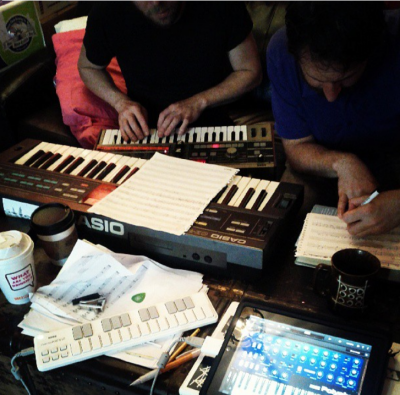
Whether you are a teacher, a therapist, a technologist or a casual music listener, know more about the properties of sounds! Try the YMusic search engine, your free personal assistant (it includes musical criteria to select music) and know more about why you and other people love the sounds you love!
CAN MUSIC TECHNOLOGY HAVE A POSITIVE IMPACT IN THE FIELD OF HUMAN HEALTH?
The benefits of innovation in the field of music
Innovation is generally a series of processes and ideas that help to create more effective products and ways to produce them. Its results appear when a significant part of the society of a category of people can get benefits from it. In the field of music, there are numerous products that can be described as innovative, be it in the field of hardware or in the domain of software, both contribute to the renewal of the music industry’s business models. Innovation explains for instance why and how record labels massively replaced the commercialization of compact discs to sell their catalogs online.
But besides financial benefits for producers and products for consumers, what does musical innovation bring to people? Different forms of improvement. For instance, in education, music technology has its place alongside traditional lessons of theory and practice time. By means of music composition and notation software (there are numerous packages, amongst them, we can mention ‘Pizzicato’), teachers can generate exercises more easily and share them more quickly.
Music technology to enhance the life of people with special needs
In the context of music listening as in music education, innovation brings more than financial rewards. For some years, musicians, researchers, engineers and therapists regularly launch projects that may help specific types of music listeners to increase their well being: people with visual impairment, traumatic brain injuries or autism, for instance. Using music technology in a therapeutic setting to enhance the benefits of music listening can be done in various ways. It is not rare that therapists try to discern what music can help their patients to relax or sleep better for example.
What about music production by people with special needs? People who have disabilities are at the bottom of the pile in music production, especially if they are compared to professional musicians, who have a lot of intellectual, technical, creative and social abilities. These professionals make a living with their music and they are often familiar with music technology, even if they have not mastered it. But can individuals with disabilities appropriate technology? Can they enjoy to enjoy making beats, loops or songs? It is possible for them to enjoy the symphony of the present moment, in spite of their difficult relationship with others and the world. Musical innovation can thus improve their life and make music accessible to everyone via the conception of prototypes. In extreme cases, a person who is blind, autistic and cannot use one of his hands easily but wants to play piano will be helped by technology: a special pedal will be made to compensate the weakness of his hand and play the missing notes. In the case of a person who is missing an arm, a prosthetic arm, 3D printed, will be designed and linked to the musical instrument the person wants to play and physical movements will be translated into music.
CAN MUSIC TECHNOLOGY HAVE A POSITIVE IMPACT IN THE FIELD OF HUMAN HEALTH?